2024 KTM 990 Duke Motorcycle Review
Review by Wayne Vickers
Day two of the 30 years of Duke Celebration saw us set to review the new 990 Duke in the morning and then the big dog 1390 Super Duke R later in the afternoon, having already tested the LAMS 390 Duke the previous day.
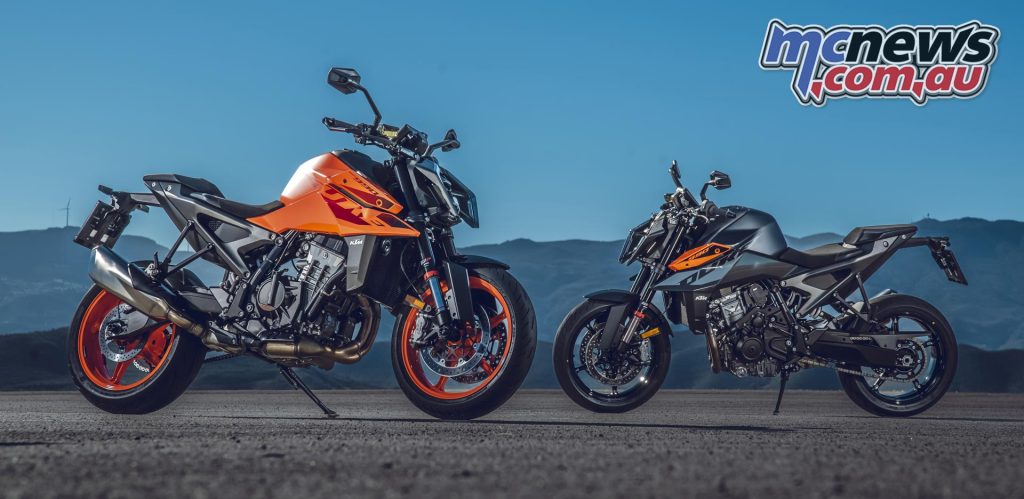
The 990 Duke is even more of a ‘new’ bike compared to the 390 in terms of its outgoing model. 96 per cent new. Essentially a clean sheet design. It’s now positioned much closer to the Super Duke in terms of styling and performance. I think more than the other variants that came into being since the 790, this latest 990 is now a very nicely resolved and more well proportioned thing.
The all new LC8c engine punches out a very healthy 123 hp, but it’s the 103 Nm that wins the day for me. The update focussed on rideability, we’re told, and on the road, it was the bottom-end and mid-range that really delivered.
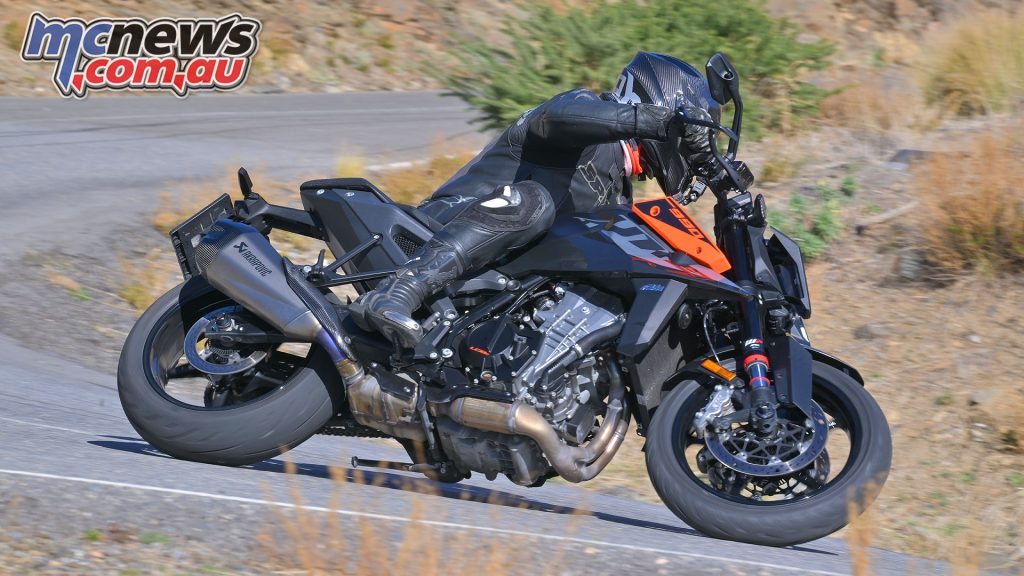
I found it tailed off a little up top by comparison to that solid grunt available lower in the rev range. It pulls cleanly right off idle pretty much, and once it’s into 3,000 plus, it’s fairly steaming. That engine is right in what I think is the sweet spot of that 120-140 hp range that is just so usable on the road for most riders. Not too little that you’re left wanting more, not too much that it’s intimidating. Just Goldilocks.
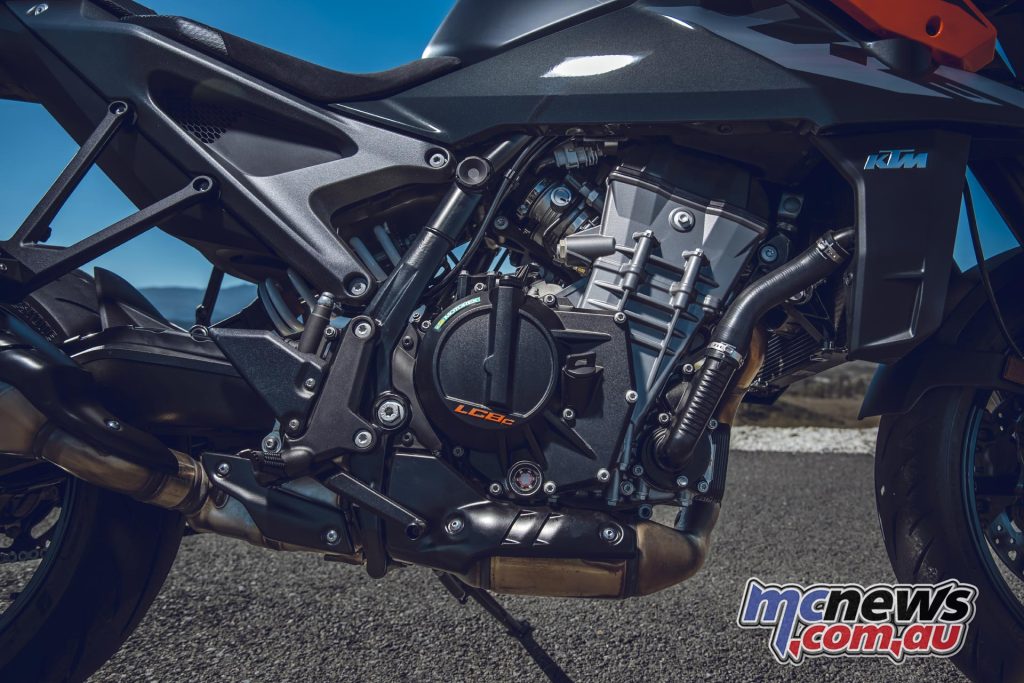
I’m a big fan of the new stainless exhaust too. I found the design of the old one to be a little off visually, but the new one looks bang on to me, even more so with the optional Akrapovic slip-on that ups the beefier note slightly more. As with a lot of bikes these days, most of the work is being done under the engine so the slip-on itself can be kept to a minimal size.
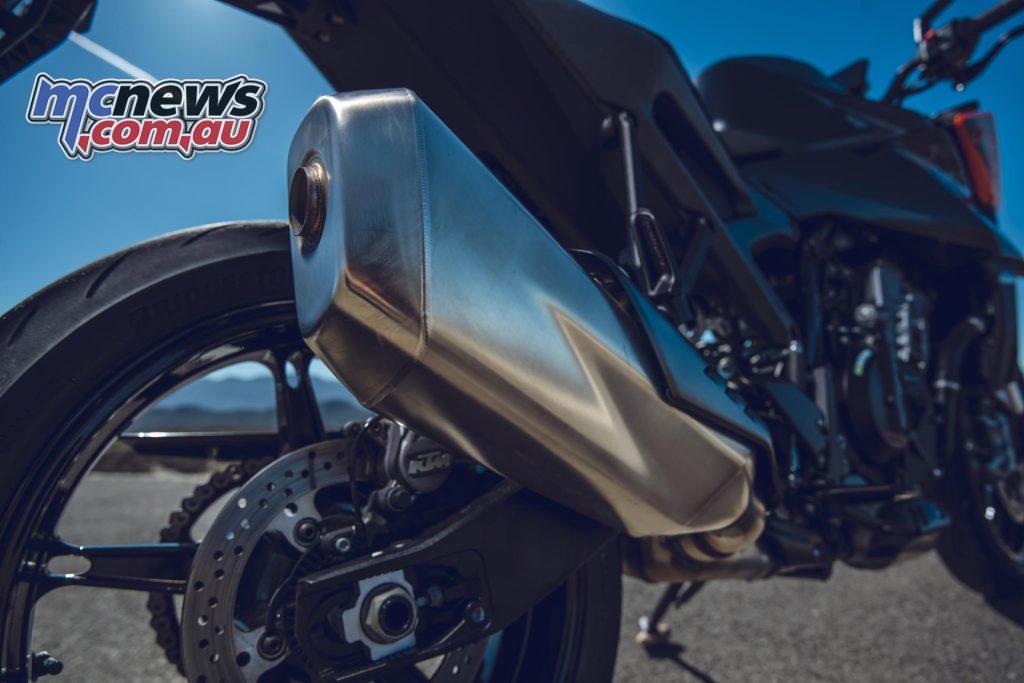
The new stiffer frame was also aimed at bringing in more stability, and I found the 990 far more settled than the older 790 and 890 models that were almost too sharp for most – I recall asking the question in the 790 Duke review if it was possible for a road bike to be too agile. The 990 Duke turns like a breeze but feels completely different in terms of being far more stable and planted. Me likey.
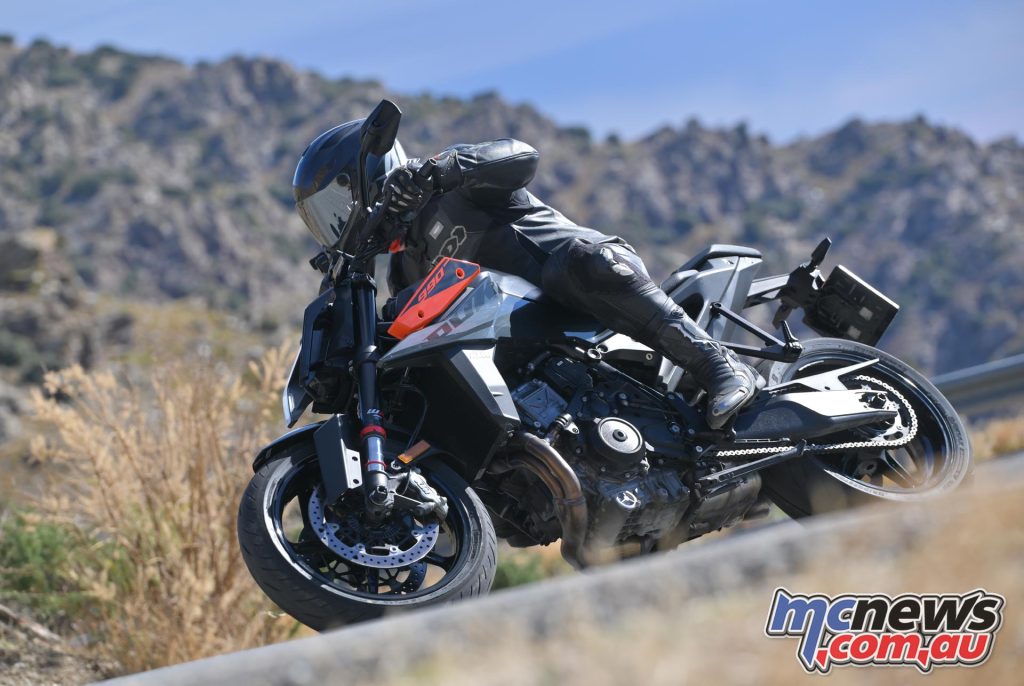
A new 1.5 kg lighter swingarm has actually had its stiffness reduced in a bid to give a little more flex for bump absorption and stability on the rear. Between the added grunt and the refined stability, they’ve really transformed the bike from the outgoing model.
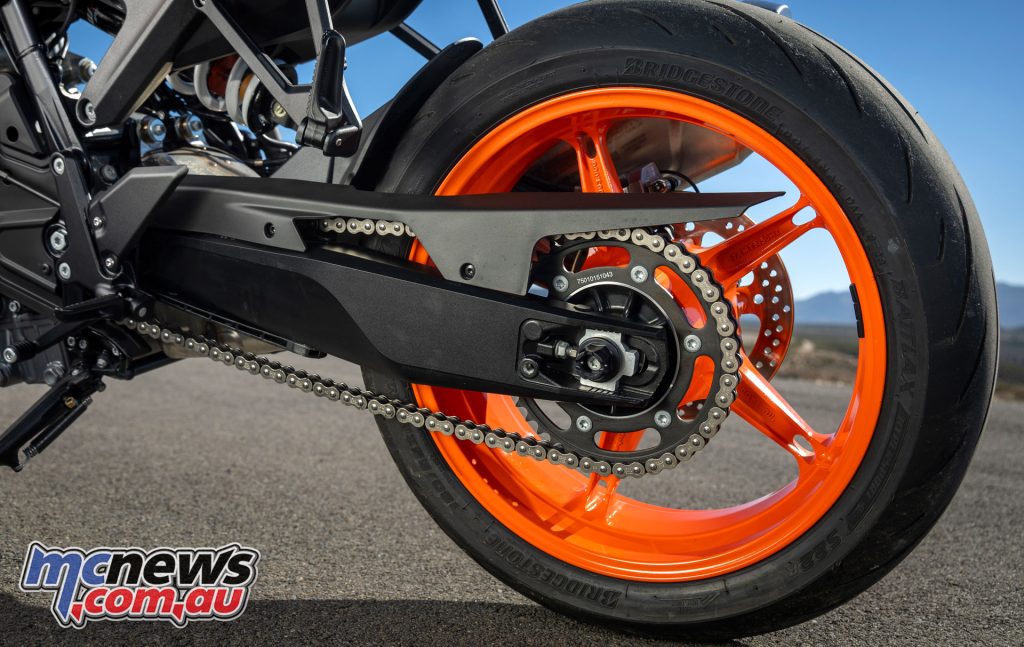
We took in some amazing roads and scenery in the mountains around the Almería Circuit, including riding through snow and ice as we crested the peak – I’m not sure I remember seeing that in the itinerary! Cold hands for sure, and a couple of puckering moments here and there on the ice within the group, but everyone kept things shiny side up.
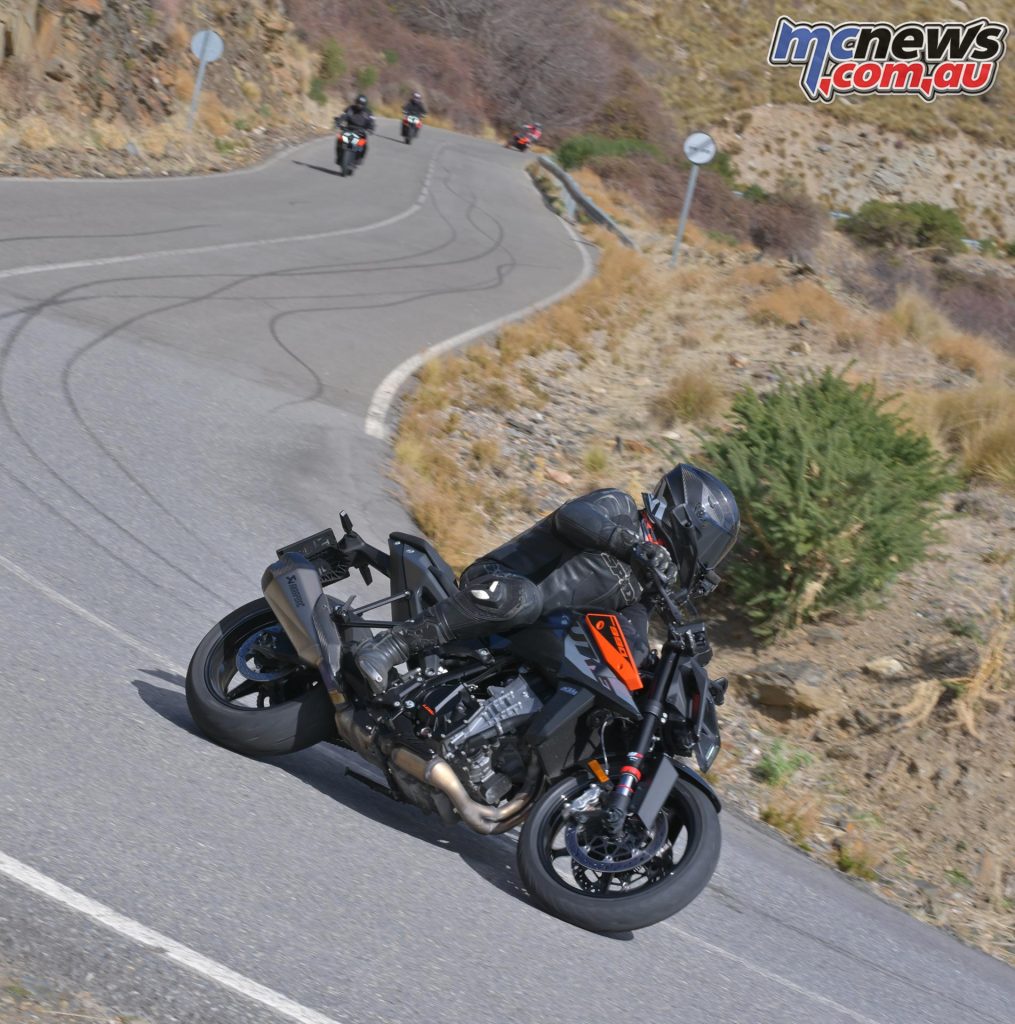
While the ride up the hills was a little tight, with fairly restricted sight lines for me to really push on, by the time we were coming down, I was feeling much more comfortable. Particularly as the road opened up a little with fewer hairpins and more third-gear sweepers.
Muchas Gracias. Just lovely. And with a ‘ready to ride’ weight (wet but no fuel) of 179 kg, the bike felt light and user-friendly. That equates to around 190 kg, fully fuelled by my math. By modern standards, with the amount of electronics and emission stuff these things run, that’s pretty decent.
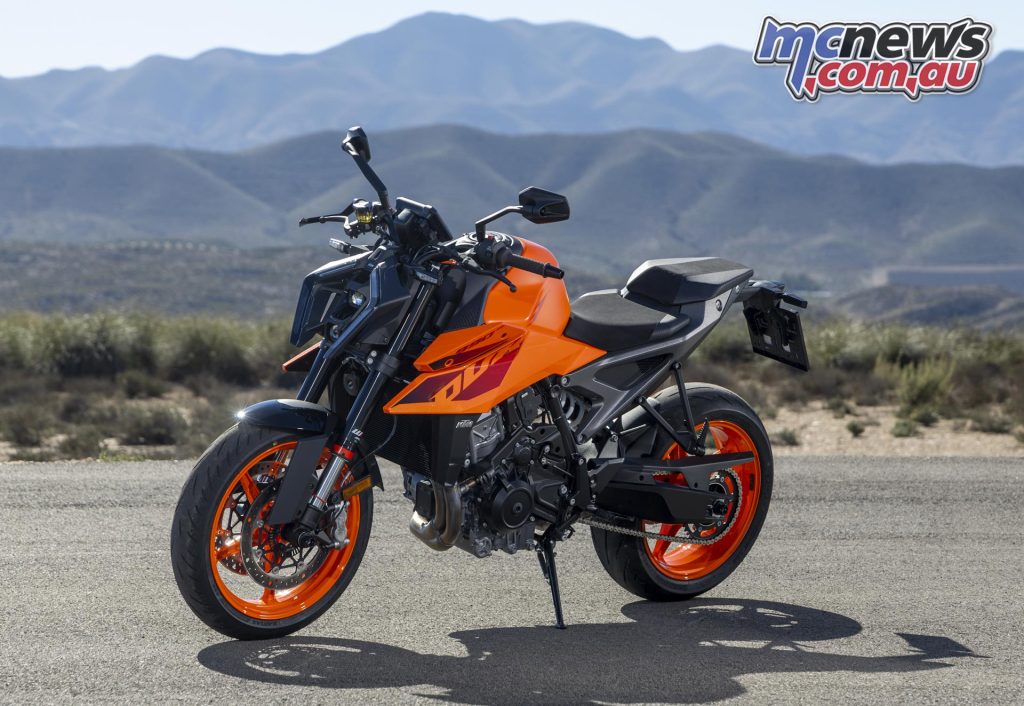
Updated WP Apex suspension, fully adjustable at the front and adjustable for pre-load and rebound at the rear, seemed an obvious step up in firmness stepping off the 390 – more so in the rear. But it wasn’t harsh.
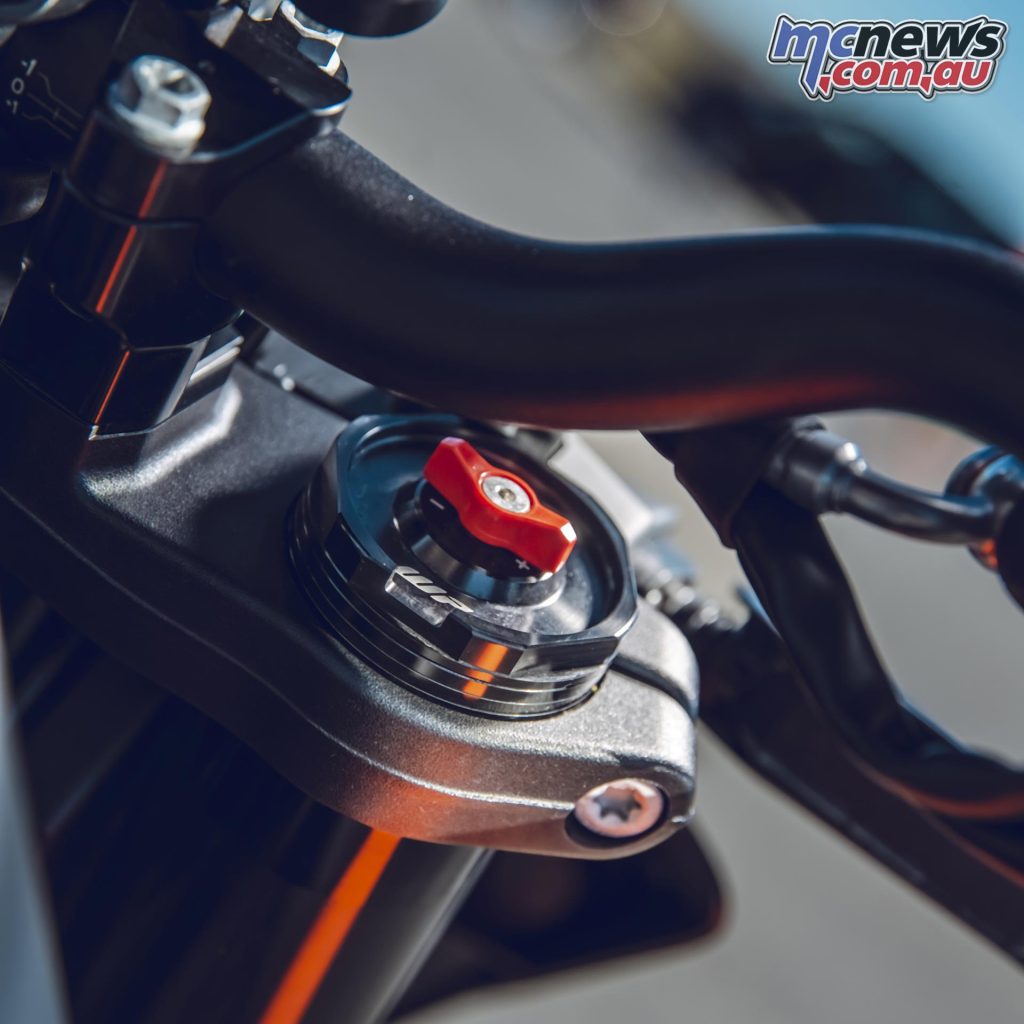
Quite nice on the road, actually. Good feel and bump control. I’d need to spend more time on it to dial it in fully, but I reckon it’d handle track days without a spring rate change in the front too, for all but the quickest riders that is. The rear, in particular, felt bang on, but the front maybe could end up stiffer for really fast chargers.
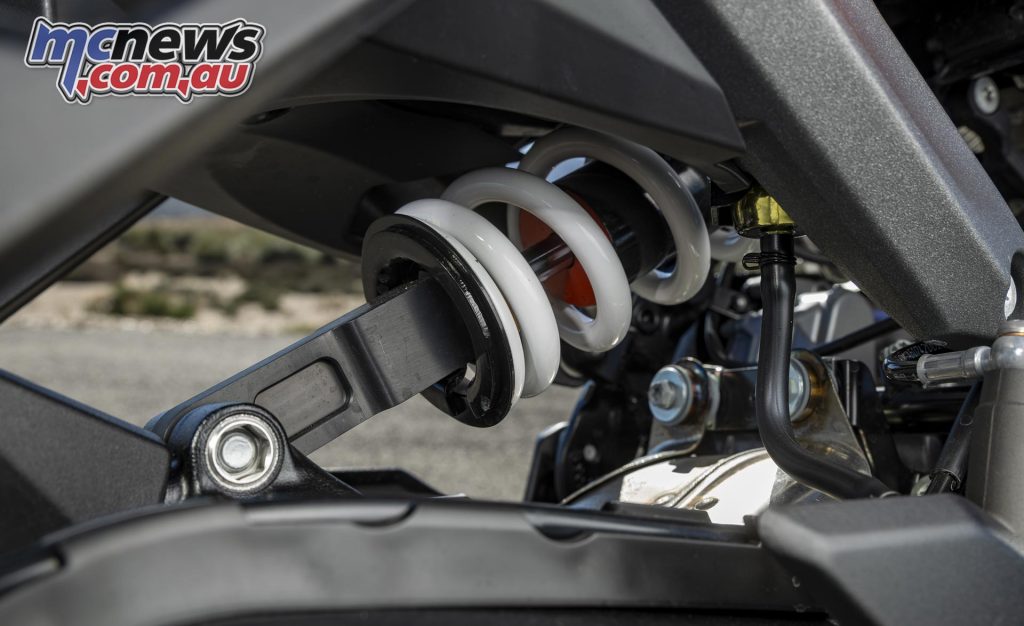
Updated brakes for this version too. Twin 300 mm discs up front and a single 240 mm out back. Calipers are carried over from the previous model, but the disc and mounting set-up has shaved another kilo off the front alone. Any reduction in rotating mass is always a big deal from a handling point of view, making for easier changes of direction, so that’s a massive win.
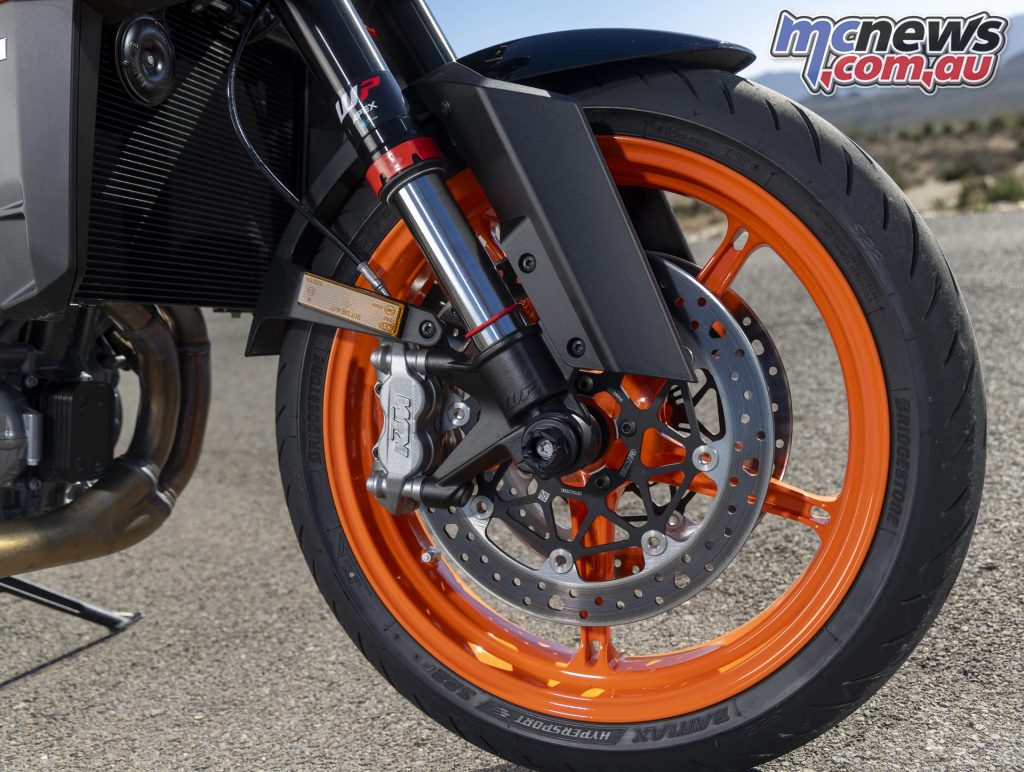
A new seat shape was tweaked a little from the previous one, which was deemed a little too forward-sloping by some customers. It seemed to fit the bill and was still nice and comfy after a solid half-day on the bike.
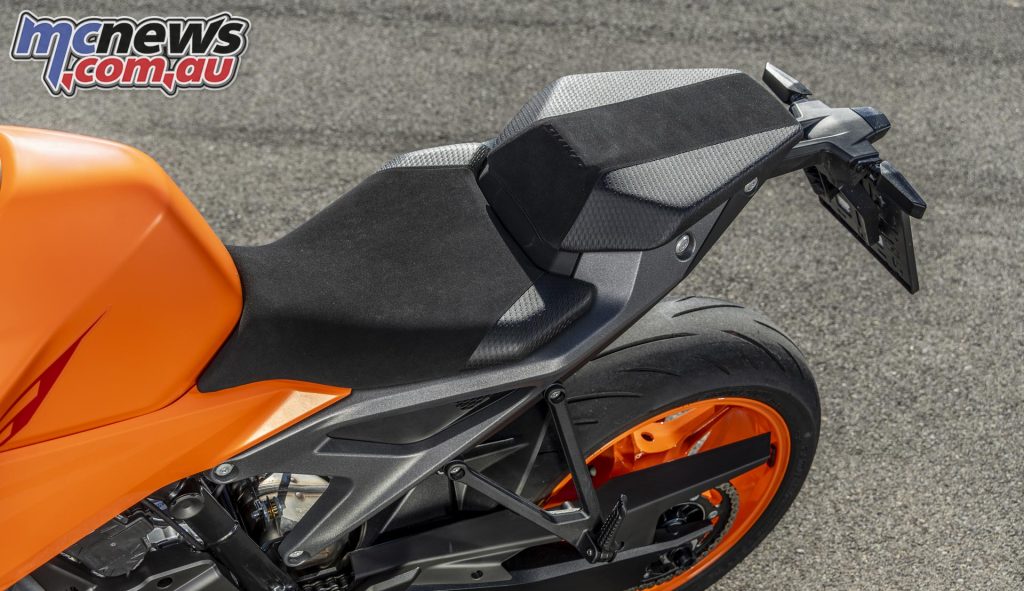
In terms of tech – the 990 Duke gets full track mode as an option, just like the 1390, which includes traction control, wheelie control (which lets you dial in how much loftage you want for maximum attack) and launch control.
I love the fact that the TC is adjustable on the fly with toggle buttons on the left switchblock too. Speaking of buttons – the switchgear on the 990 was my favourite of the group. Easy to use on the go, nice big buttons. Not too fiddly.
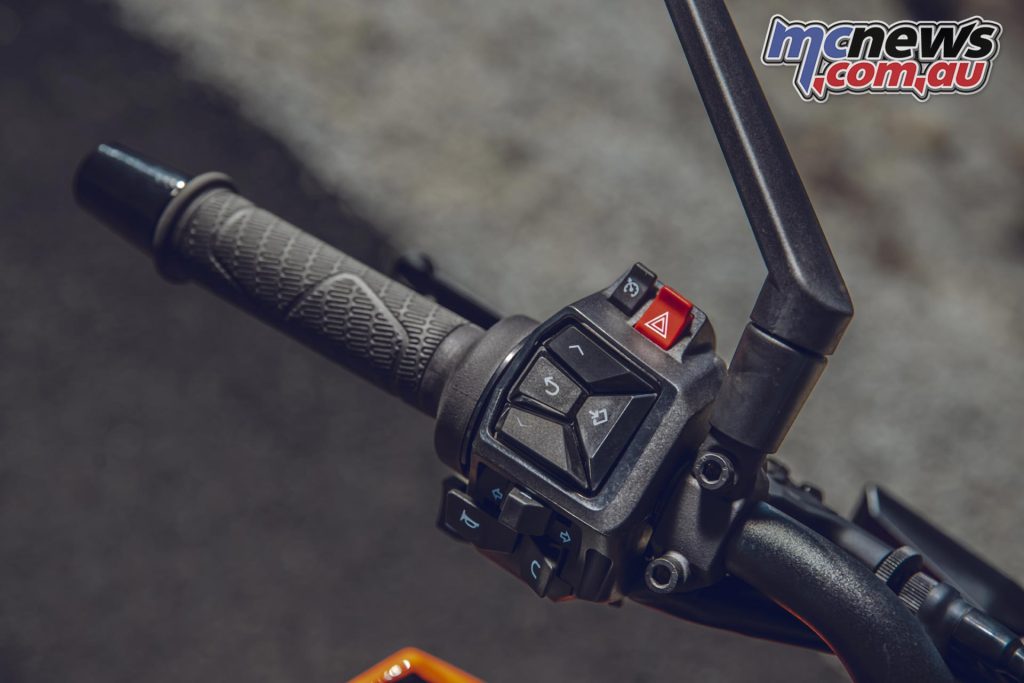
You also get telemetry, including a live view of your lean angle, and it records the maximum lean also. I am not sure if that’s a good idea to show those live on the dash, personally. You probably should be looking at the road, not the dash mid-corner, but there you go.
Maybe I’m channelling my inner captain sensible there. It did make for some talking points at each stop though. It turns out I’m more comfortable cranking it over on left-handers on the road than right-handers by a couple of degrees.
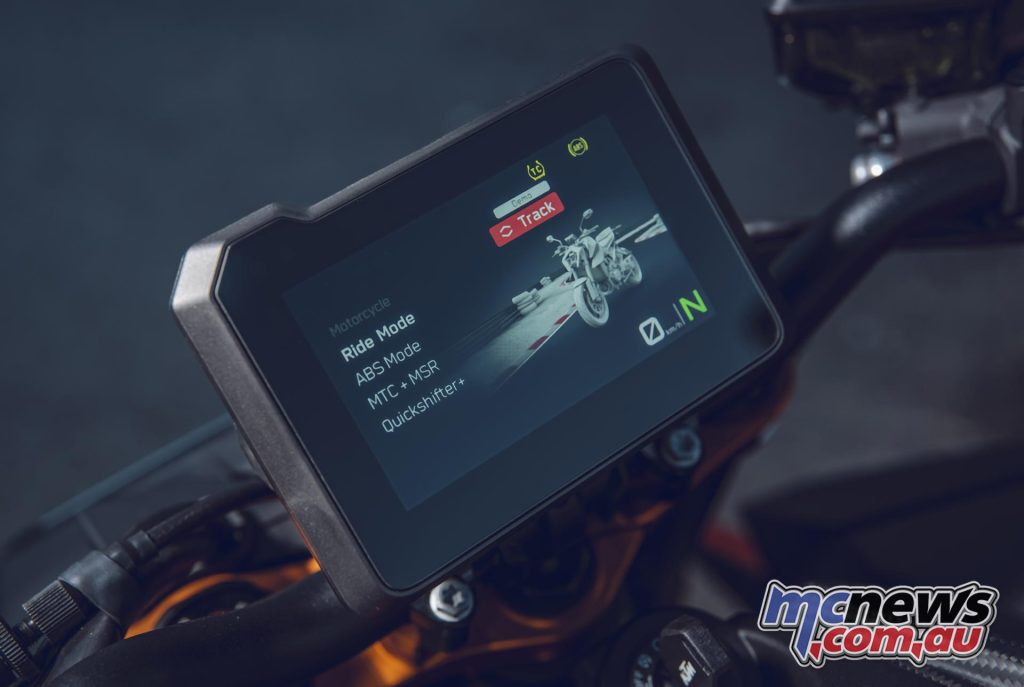
The new styling all over seems better resolved and more Super Duke than the outgoing 890 Duke. It includes the somewhat controversial headlight treatment, which I have to say – seems less controversial in the metal than in pics, and I had no issue with it. I’m not sure I’d say I love it yet, but admit it’s grown on me.
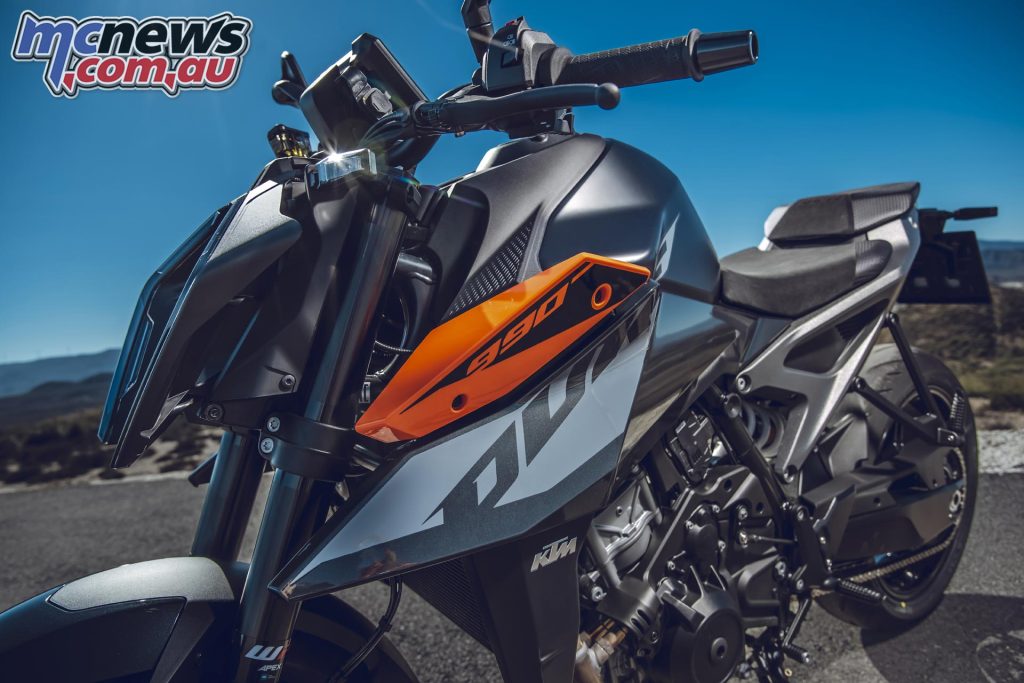
That headlight unit is exactly the same design as the 1390 SDR, even though the 990’s intake is positioned under the seat as opposed to up front on the 1390. The wheel design is also shared between the two, with the front wheel being the same part number (the rear is slightly different on the 1390 to accommodate the single-sided swing-arm).
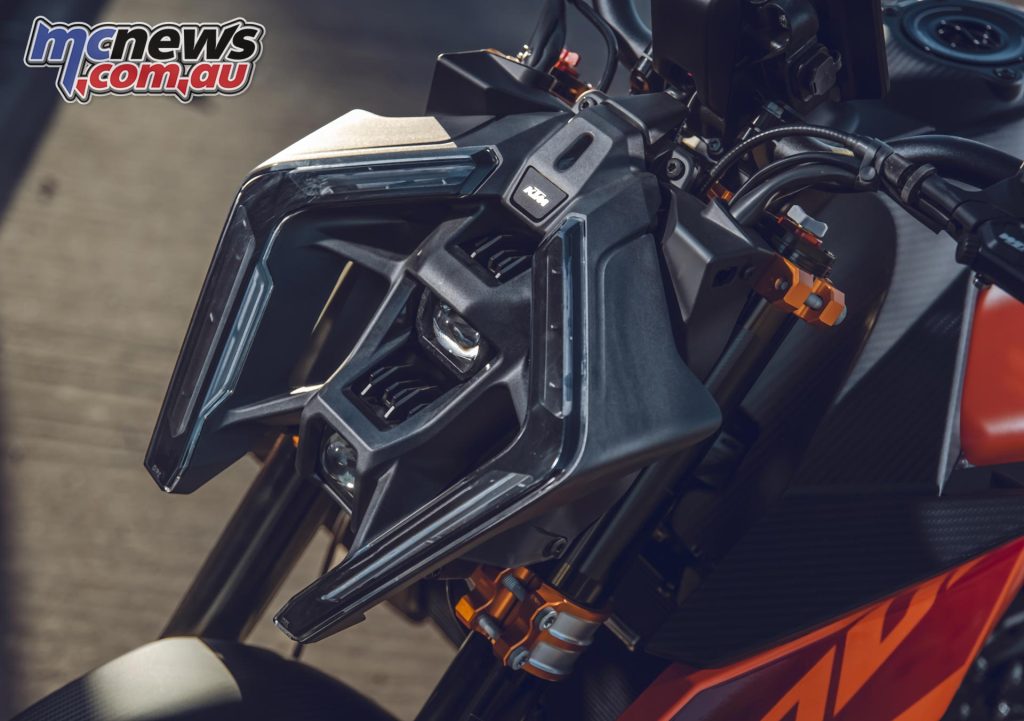
In terms of range, the tank holds 14.5 L, which should be enough for 300 km if you’re not going ballistic. And like the other models, all surfaces are painted, and the stickers are oversprayed for a premium finish.
Price-wise, it’s coming in at twenty grand on the road, which seems well priced. As with most KTM models, you’ll have to opt for a Tech Pack to get all of the electronic goodies (track mode, quick-shifter, TC, engine map selection, wheelie control, etc.) for another couple of grand. And extra again if you want heated grips. As a Melbournite, heated grips are a must for me for year round riding.
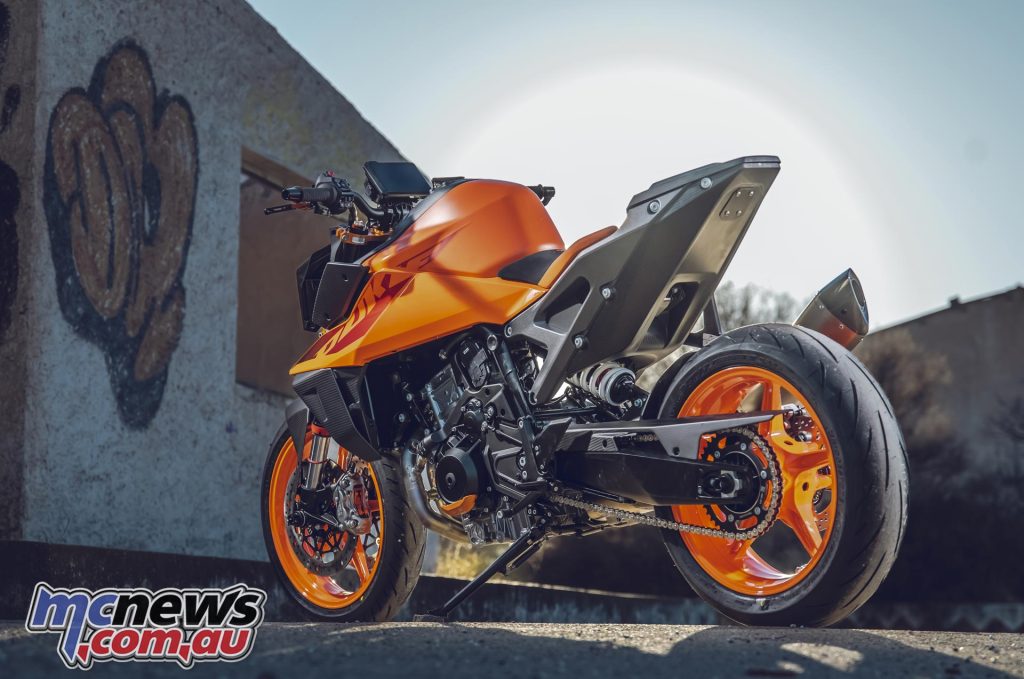
All in all the 990 Duke marks a real ‘growing up’ point from the 790 and 890 generation Dukes. In all aspects – styling, power and handling, I’m saying they’ve pretty much nailed this one.
In fact, the 990 is probably my pick of the three new models. I suspect it might cannibalise a few sales off the Super Duke R, but I’ll predict now that it will comfortably outsell the outgoing 890.
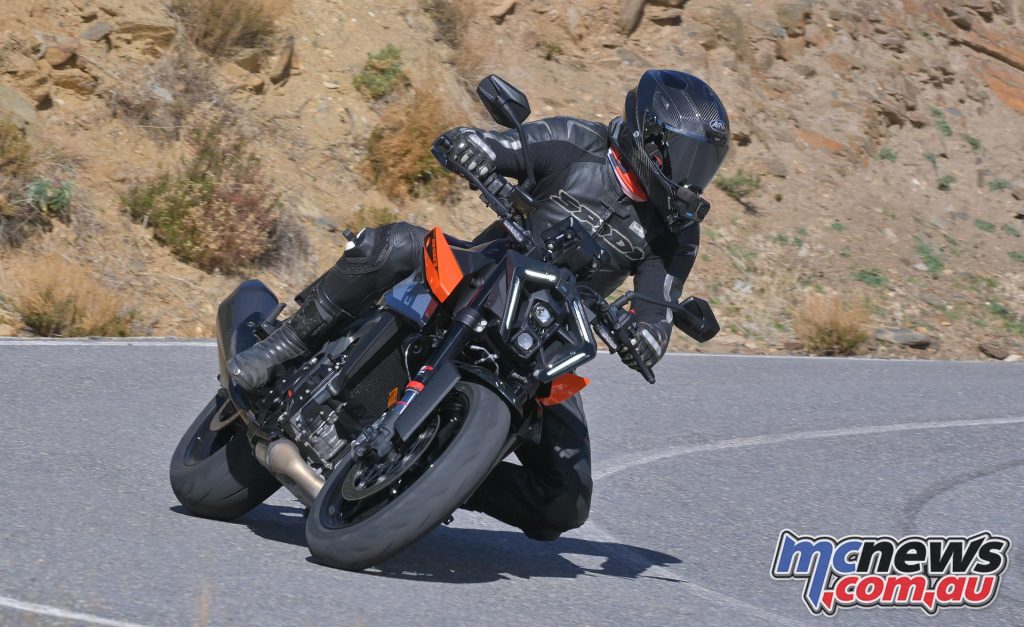
It’s usable, comfortable, well finished and just bloody good fun. Both experienced riders and those making their first steps up will enjoy it immensely. Pretty keen to spend more time on one actually when they arrive in Oz. Normally I’d go the orange, but that black looked pretty damn good…
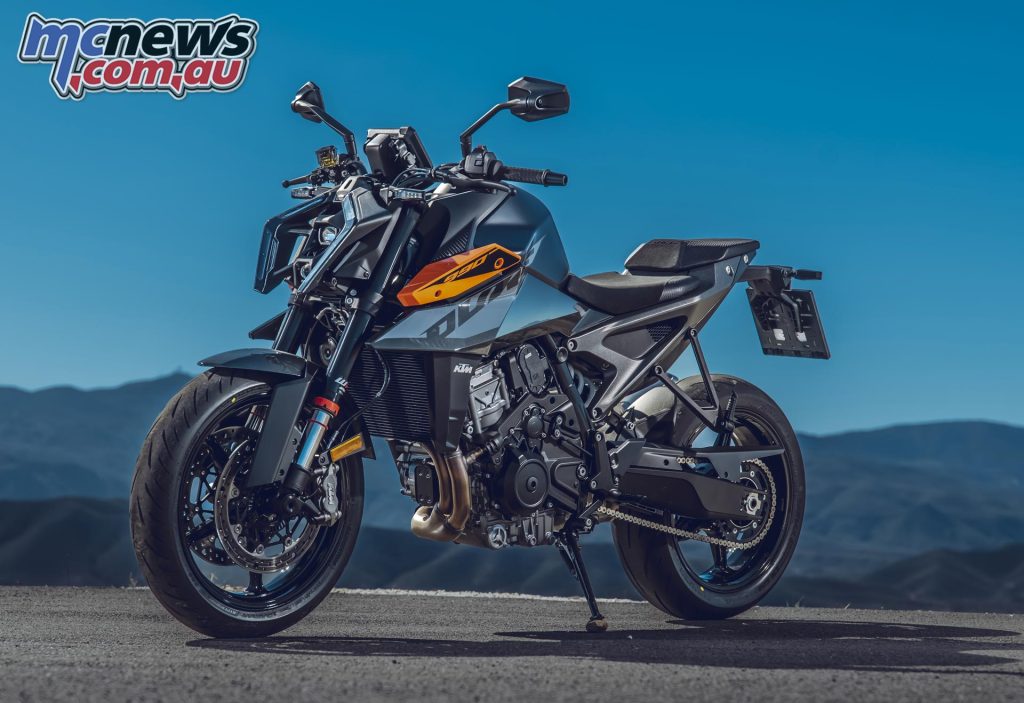
For more info or to find your local KTM dealer head to the KTM Australia website (link).
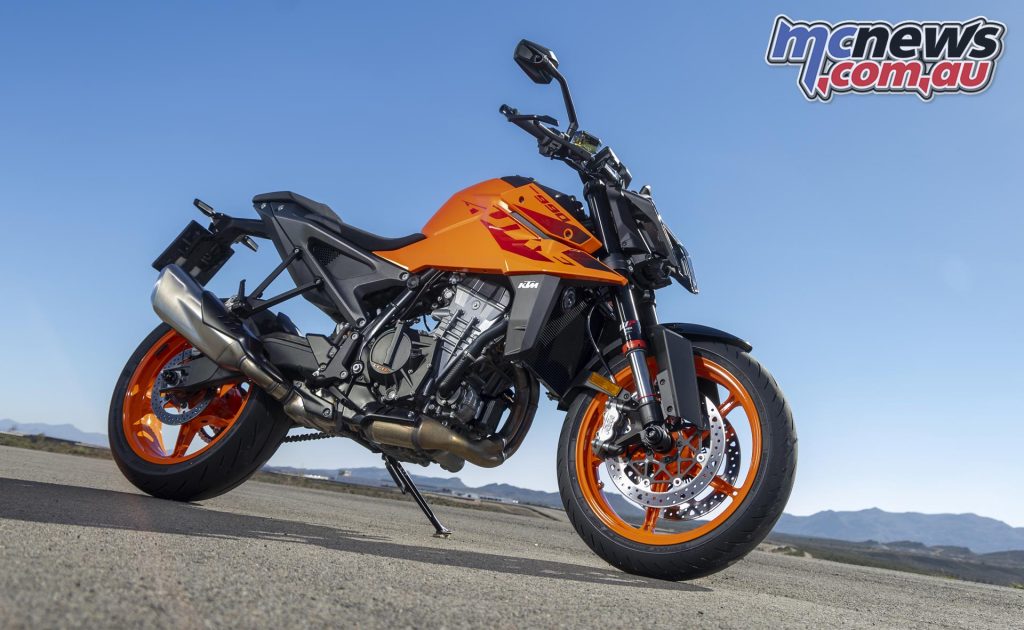
2024 KTM Duke 990 Specifications
| 2024 KTM Duke 990 Specifications | |
| ENGINE | 2 cylinder, 4 stroke, DOHC Parallel twin (EURO5+) |
| DISPLACEMENT | 947 cc |
| BORE / STROKE | 92.5 / 70,4 mm |
| POWER | 123 hp @ 9,500 rpm |
| TORQUE | 103 Nm @ 6,750 rpm |
| COMPRESSION RATIO | 13.5:1 |
| STARTER / BATTERY | Electric / 12V 10Ah |
| TRANSMISSION | Six gears |
| FUEL SYSTEM | DKK Dellorto (Throttle body 46mm) |
| CONTROL | 4 valves per cylinder / DOHC |
| LUBRICATION | Pressure lubrication with 2 oil pumps |
| ENGINE OIL | Motorex, Power Synth SAE 10W-50 |
| PRIMARY DRIVE | 42:76 |
| FINAL DRIVE (SECONDARY) | 16:43 |
| COOLING | Liquid cooled with water/oil heat exchanger |
| CLUTCH | Cable operated PASC Slipper clutch |
| EMS | Bosch EMS with RBW |
| TRACTION CONTROL | MTC (lean angle sensitive, 3-Mode disengageable + Track / Performance optional) |
| FUEL CONSUMPTION | 4.7 l / 100km |
| FRAME | Chromium-Molybdenum-Steel frame using the engine as stressed element, powder coated |
| SUBFRAME | Aluminium, powder coated |
| HANDLEBAR | Aluminium, tapered, Ø 28 / 22 mm |
| FRONT SUSPENSION | WP APEX 43 mm |
| ADJUSTABILITY | Compression, rebound (5 click) |
| REAR SUSPENSION | WP APEX Monoshock |
| ADJUSTABILITY | Rebound (5 click), manual preload |
| SUSPENSION TRAVEL F/R | 140 / 150mm |
| FRONT BRAKE | 2 × radially mounted 4 piston caliper, brake disc Ø 300 mm |
| REAR BRAKE | 2 piston caliper, brake disc Ø 240 mm |
| ABS | Bosch 9.3 MP (incl. Cornering-ABS and Supermoto mode) |
| WHEELS FRONT / REAR | Cast aluminium wheels 3.50 × 17“; 5.50 × 17“ |
| TIRES FRONT / REAR | Bridgestone S22, 120 / 70 ZR 17, 180 / 55 ZR 17 |
| CHAIN X-Ring | 520 |
| SILENCER | Stainless steel primary and secondary silencer |
| STEERING HEAD ANGLE | 65.8° |
| TRAIL | 100 mm |
| WHEEL BASE | 1,476 mm ± 15 mm |
| GROUND CLEARANCE | 195 mm |
| SEAT HEIGHT | 825 mm |
| TANK CAPACITY | Approx. 14.8 litres / 3 l reserve |
| WEIGHT | 179 kg |


























































